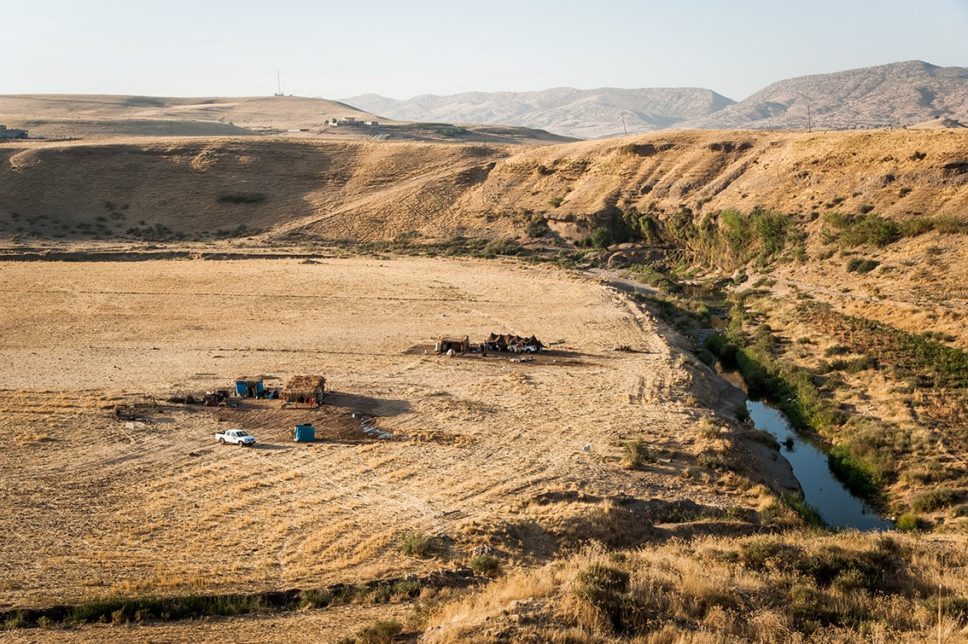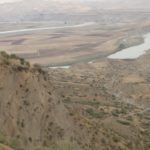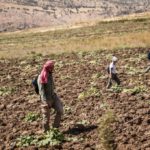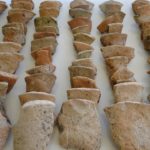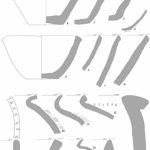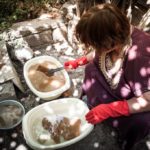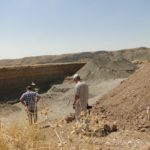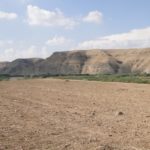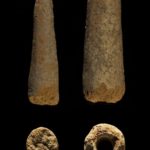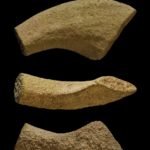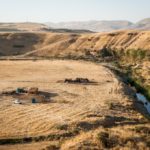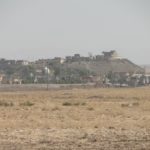Iraqi Kurdistan
-
Project name:
“Newcomers and autochthons. Settlement in the Upper Zab basin in the Late Chalcolithic and Ninevite 5 periods”
Sub-project conducted as part of the UGZAR (Upper Greater Zab Archaeological Reconnaissance) concession, directed by Dr. R. Koliński (Adam Mickiewicz University in Poznań) -
Location:
Iraq, autonomous Kurdistan Region
Erbil and Dohuk Governorates
Upper Zab basin
Northern MesopotamiaDating:
– Late Chalcolithic period (4200–3100 BC)
– Ninevite 5 period (first half of the 3rd millennium BC)
History of research:
– Survey conducted between 2013 and 2017
Directors:
Dorota Ławecka
Rafał Koliński (director of the UGZAR project)
Additional information about the project:
The “Newcomers and autochthons. Settlement in the Upper Zab basin in the Late Chalcolithic and Ninevite 5 periods” project is part of the UGZAR concession. The UGZAR work is conducted under direction of Rafał Koliński of the Adam Mickiewicz University in Poznań, as part of the program “Settlement history of the Iraqi Kurdistan” financed by the National Science Centre (grants 2011/03/B/HS3/01472 (2012–2014) and 2014/13/B/HS3/04872 (2015–2017).
Description of the site and research:
In the second half of the 4th millennium BC the southern Mesopotamian Uruk culture expanded to the surrounding territories. This phenomenon was well-recognized in northern Syria and southern Turkey, but not much is known about it in northern Iraq. Apart from settlements with sets of local objects, sites with numerous typically southern Uruk products were also identified in the region.
The main aim of the project is to identify settlements where Late Uruk period pottery is present. The repertoire of forms of both the southern Mesopotamian pottery and local wares will be analyzed.
After establishing the quantitative ratio of objects belonging to these two groups, it will be possible to preliminary assess the degree to which each site was related to the southern culture. As a result it will be possible to compare the sites where southern materials were found with the ones where only local pottery was present, taking into consideration the frequency of their occurrence and possible differences in location which may be due to the existence of ancient trade routes.
The analysis of earlier Chalcolithic remains and later finds belonging to local wares called the Ninevite 5 period pottery will enable preliminary conclusions as to the continuity (or lack of) of settlement on sites where such material was found.
During former surveys 28 Late Chalcolithic settlements were identified, most of which were previously unknown. The surprising and fascinating discovery of sites representing almost exclusively southern material culture (beside the ones where only local, northern pottery types were found) enlarges our knowledge of the expansion of the Uruk culture into the Upper Zab region.
Research results:
Season by Season – “PCMA Newsletter “
- Season 2017
- Season 2016
- Season 2015
- Season 2014
- Season 2013
Gallery:
-
1. The Upper Greater Zab Valley in the area of the concession / Dolina górnego Wielkiego Zabu na terenie koncesji (fot. D. Ławecka)
-
2. Looking for pottery / W poszukiwaniu ceramiki (fot. K. Do Huu)
-
3. Fragments of the so-called bell-shaped bowls, characteristic of the southern Uruk culture, from sites S002 and S146 / Fragmenty tzw. mis dzwonowatych, charakterystycznych dla południowej kultury Uruk, ze stanowisk S002 i S146 (fot. D. Ławecka)
-
4. Southern Uruk pottery from sites S002 and S146 / Południowomezopotamska ceramika Uruk ze stanowisk S002 i S146 (rys. L.K. Walika)
-
5. Cleaning the pottery with acid / Czyszczenie ceramiki w kwasie (fot. K. Do Huu)
-
6. Site S002 in 2015, destroyed by gravel extraction / Stanowisko S002 w roku 2015 – całkowicie zniszczone przez wydobycie żwiru (fot. D. Piasecki)
-
7. Site S002 from the Late Chalcolithic, documented in 2012 / Stanowsko S002 z okresu późnego Chalkolitu, zadokumentowane w 2012 roku (fot. D. Ławecka)
-
8. Ceramic wall cones from site S002 / Ceramiczne ścienne stożki ze stanowiska S002 (fot. D. Piasecki, © UGZAR)
-
9. Ceramic sickle from site S002 / Ceramiczny sierp ze stanowiska S002 (fot. D. Piasecki, © UGZAR)
-
10. Groups of nomadic herders can still be encountered in the valleys / W dolinach ciągle jeszcze można spotkać grupy wędrownych pasterzy (fot. D. Piasecki, © UGZAR)
-
11. Multicultural Tell Rovia, one of the largest tells in the project’s area / Wielokulturowy Tell Rovia, jeden z największych telli na obszarze projektu (fot. D. Ławecka)

